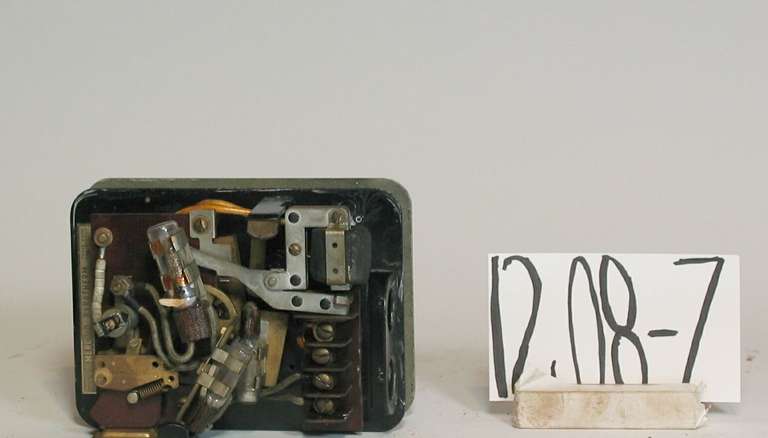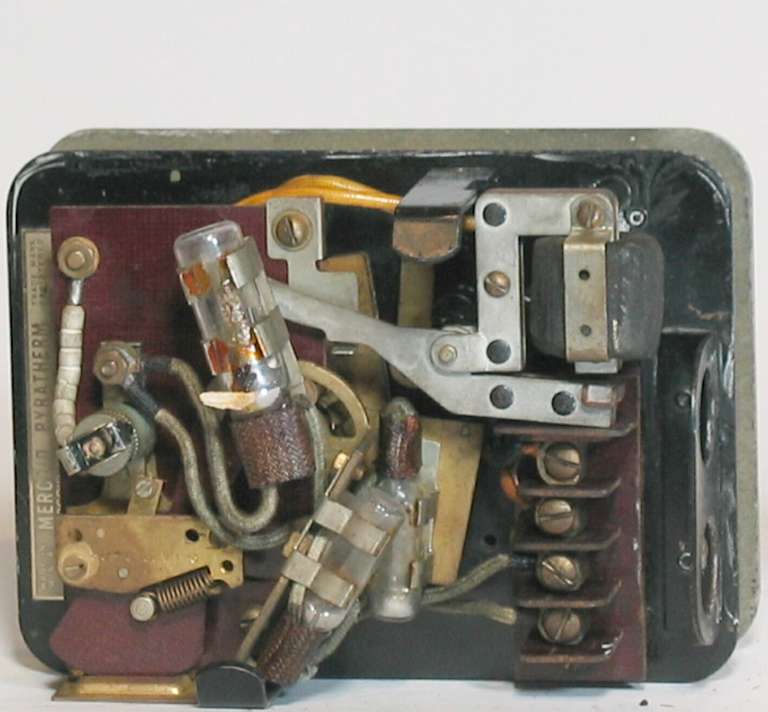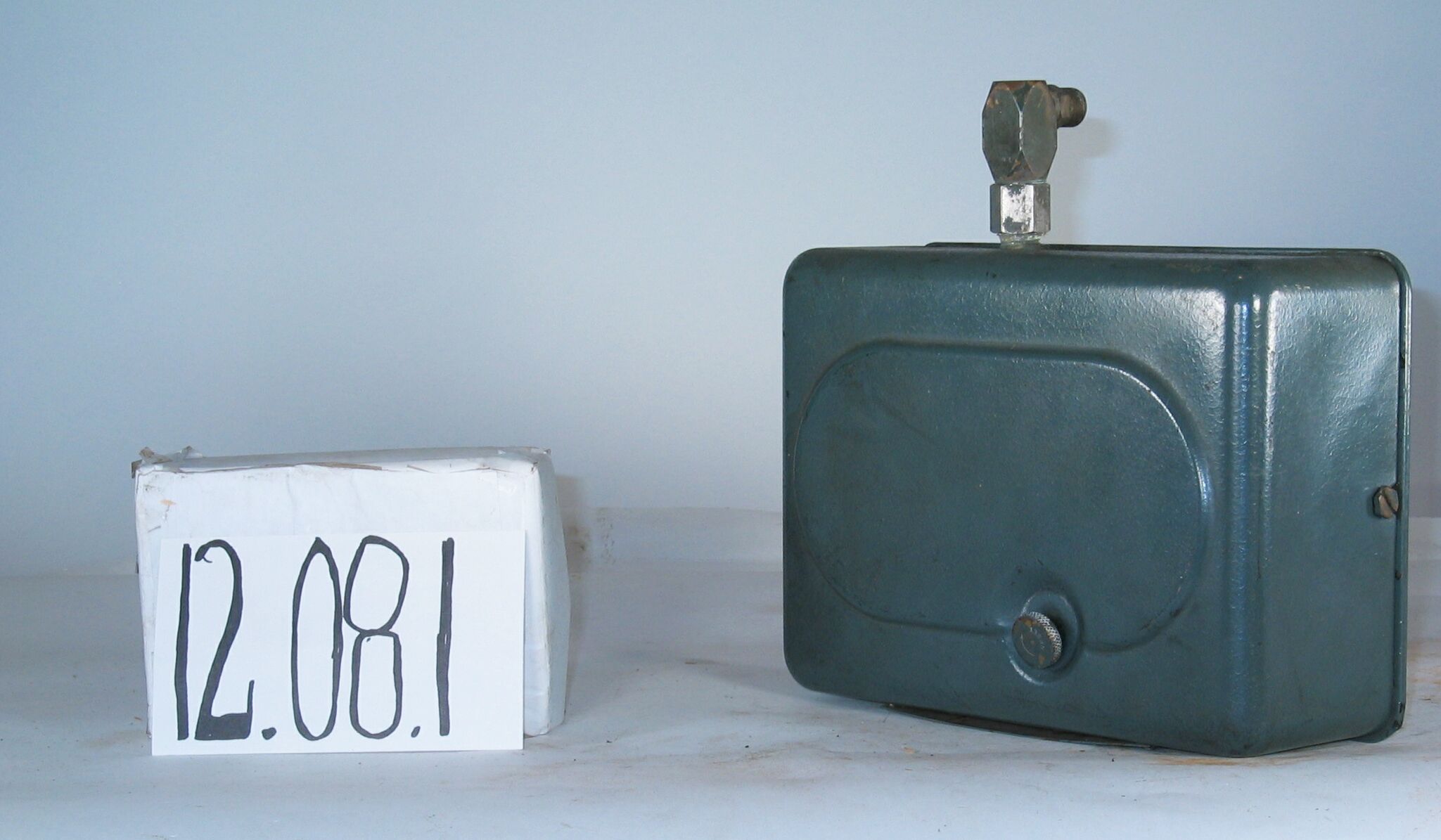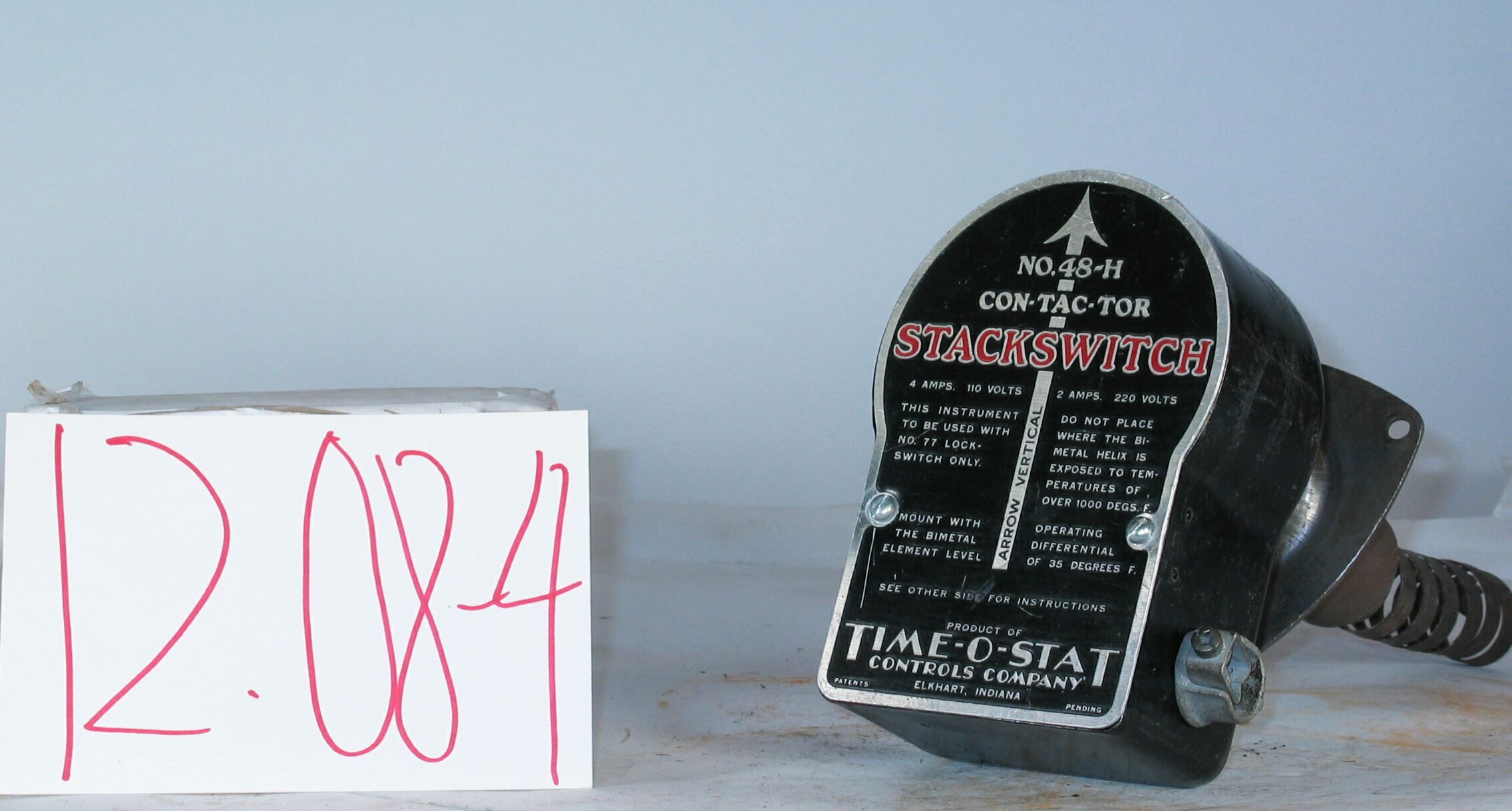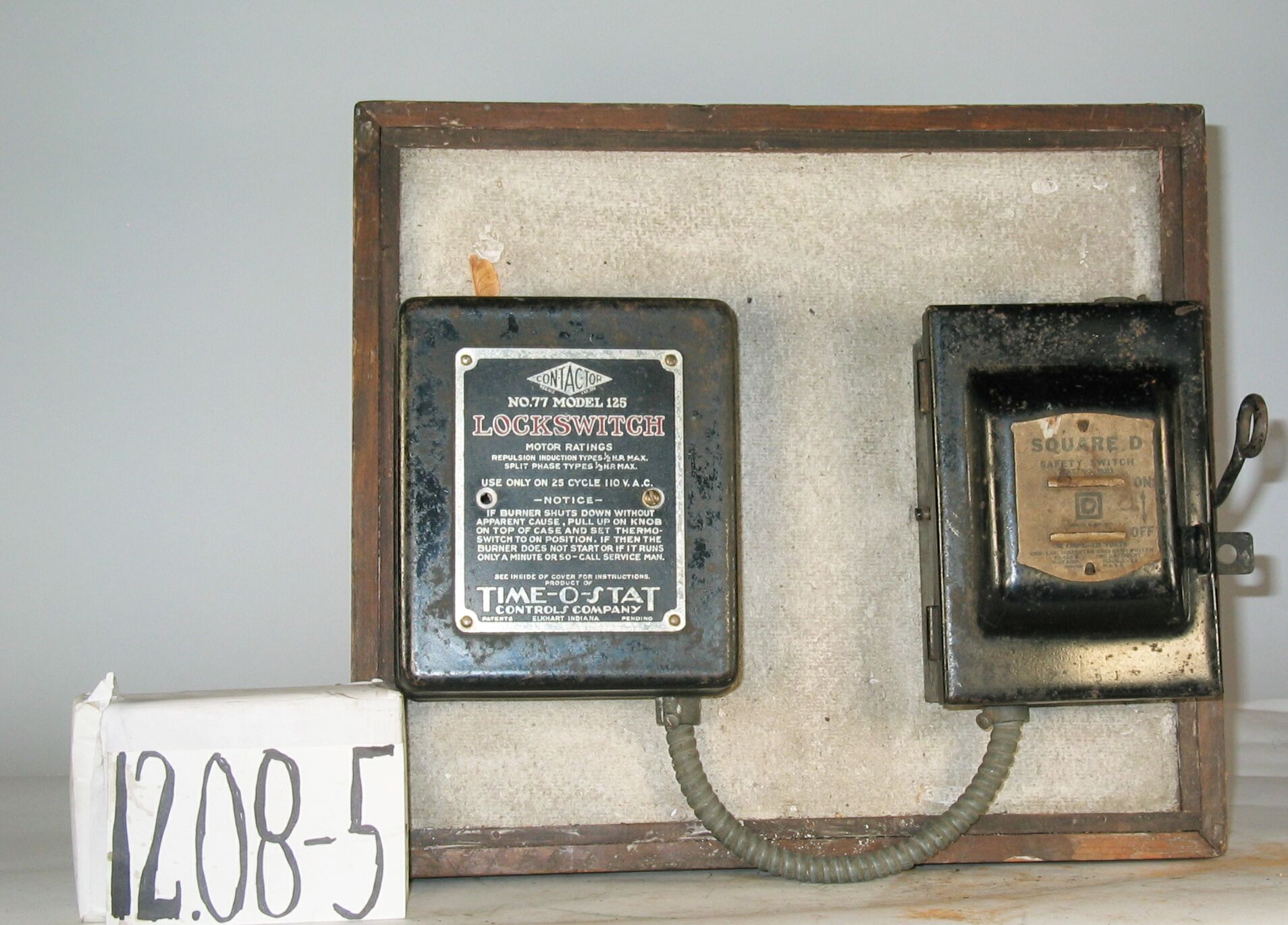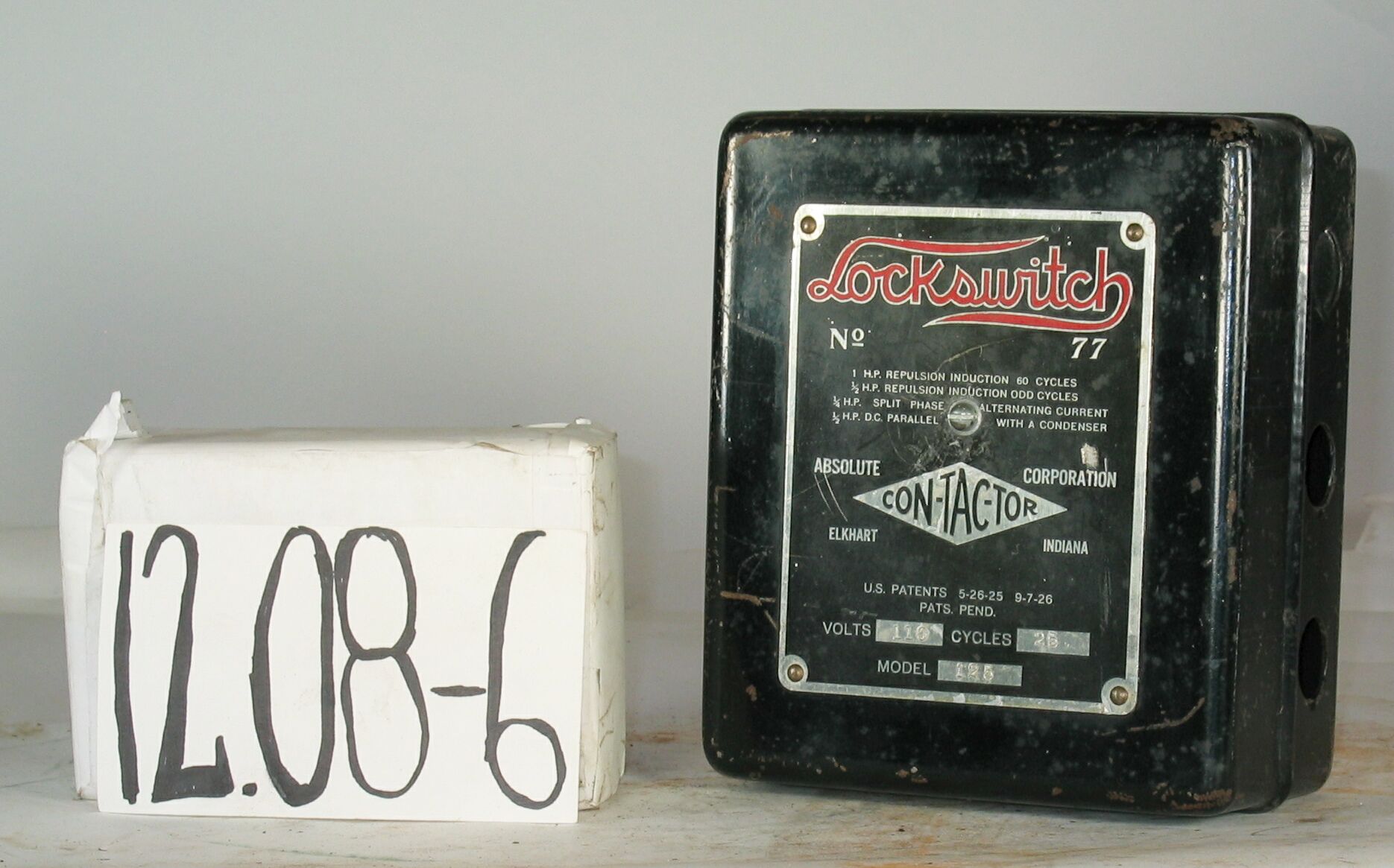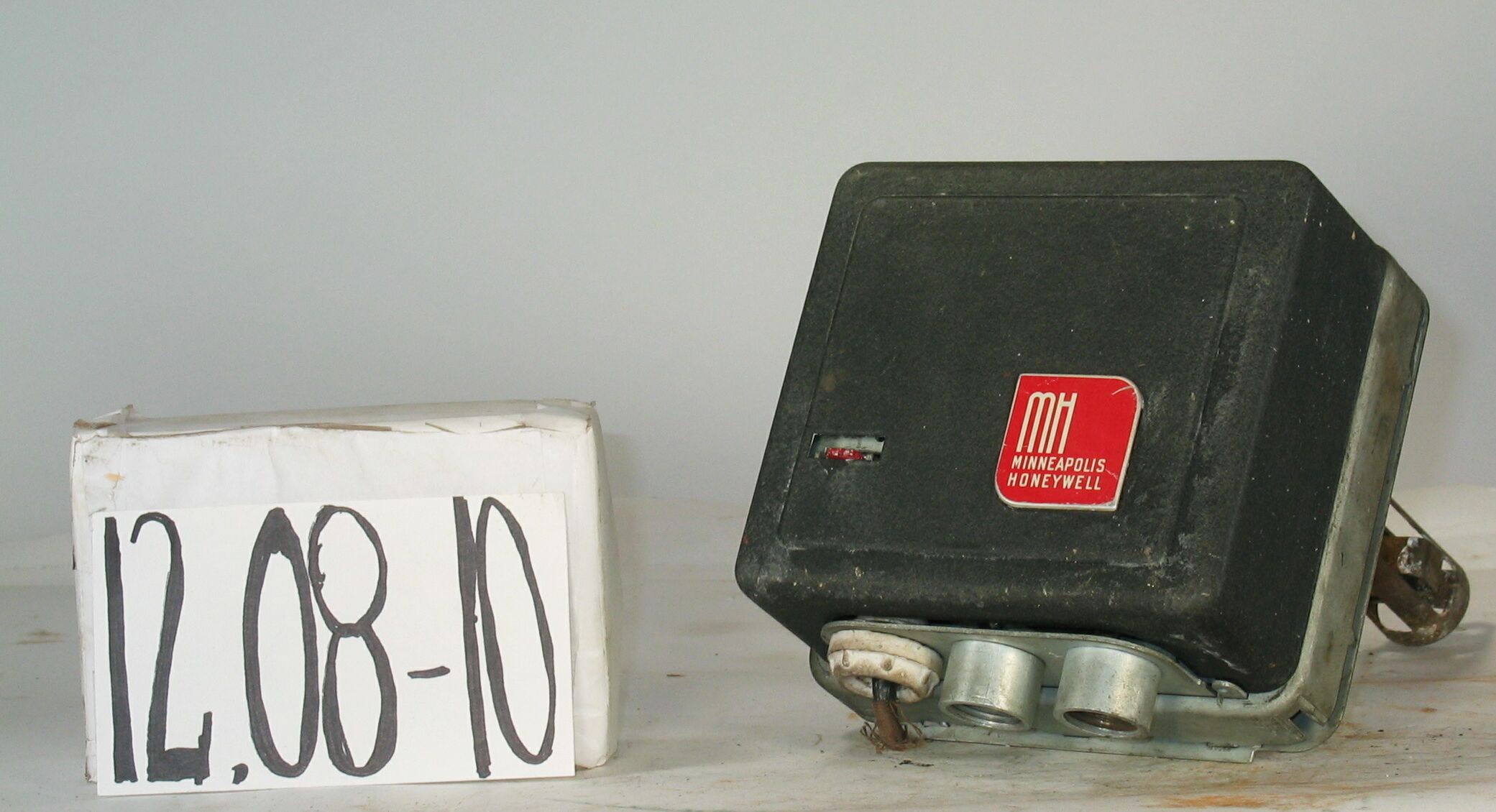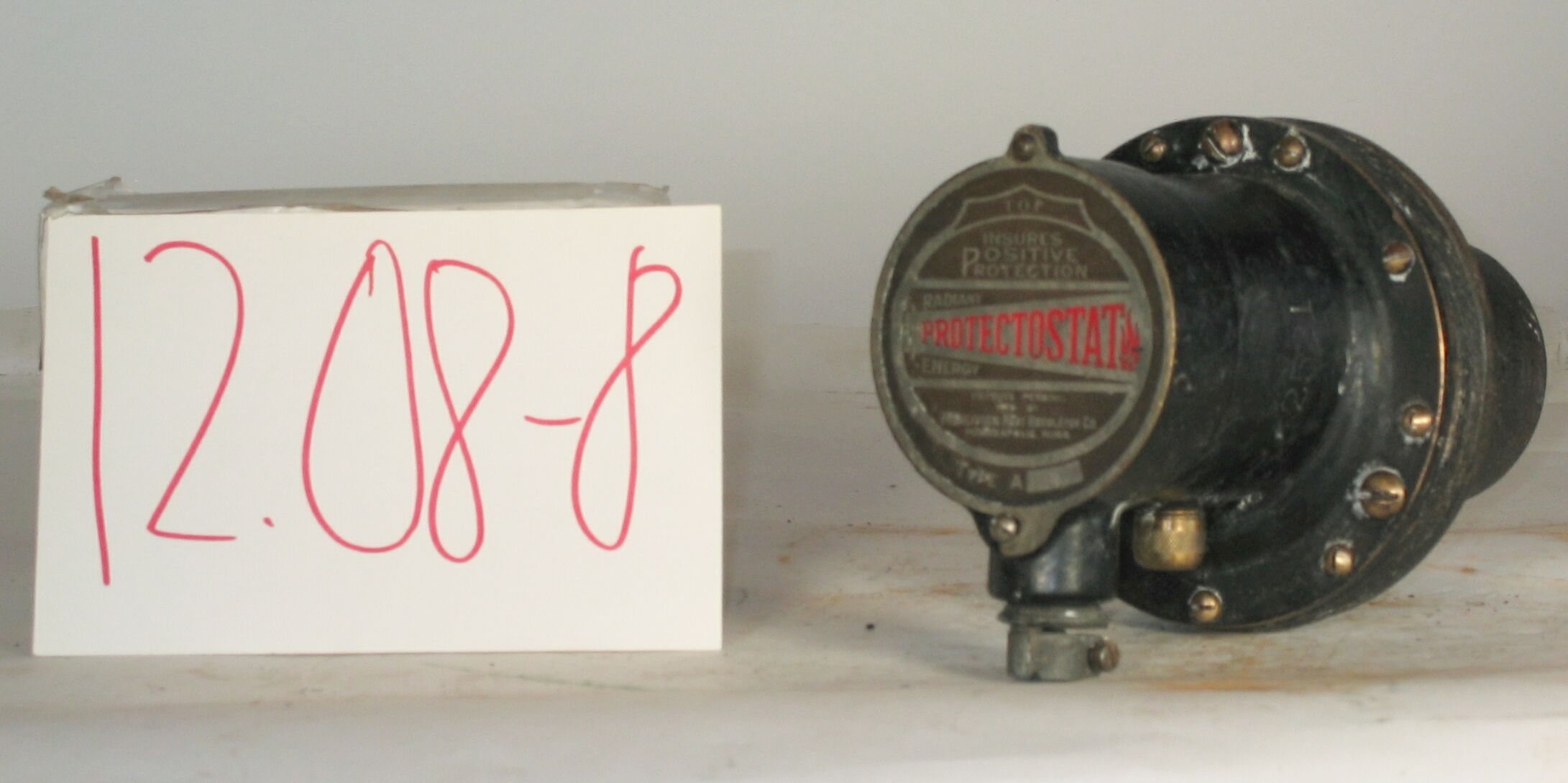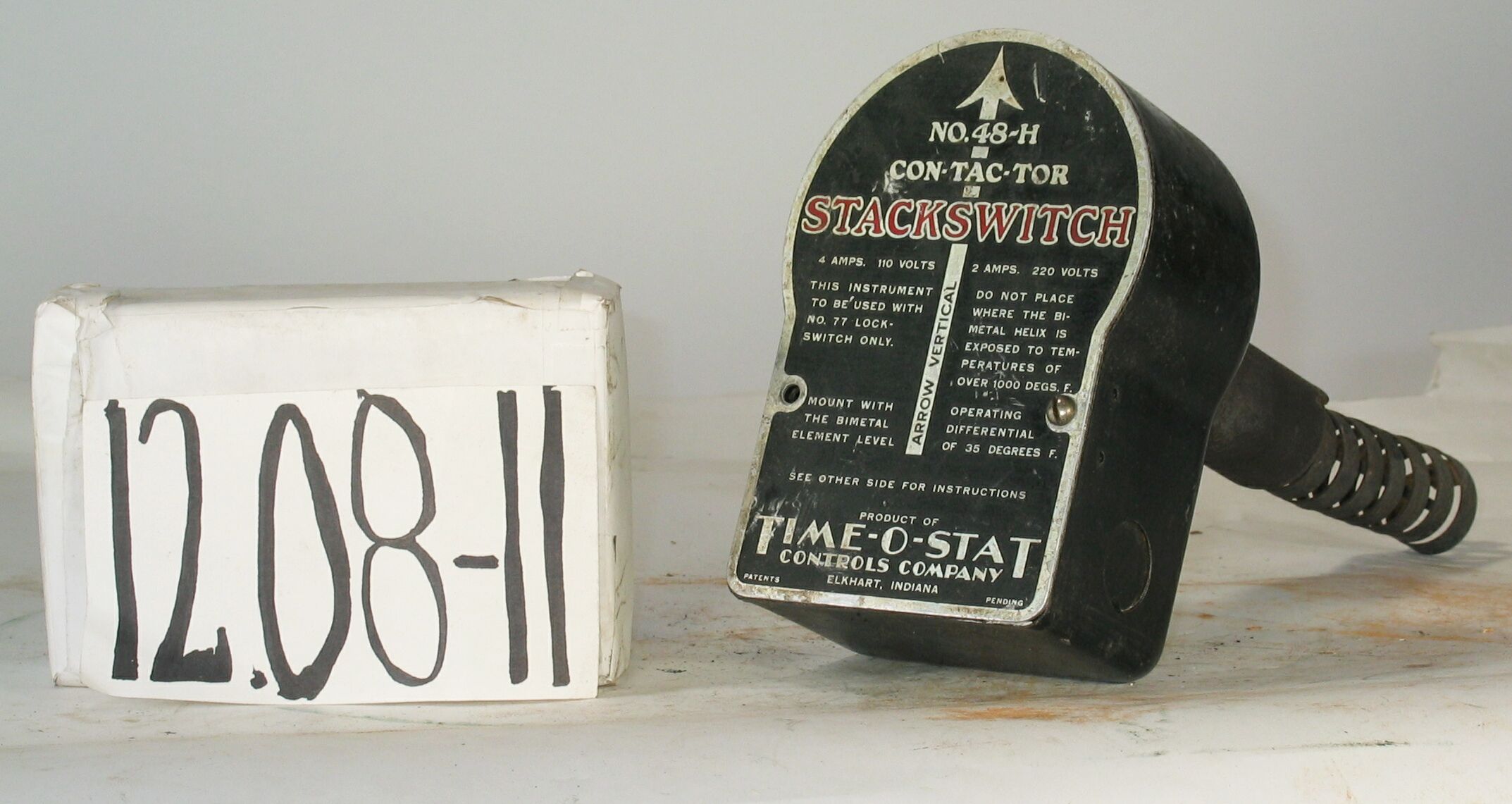12.08-7: Mercoid 1930 Combustion Controller

| HHCC Accession No. 2006.108 | HHCC Classification Code: 12.08-7 |
|---|
Description:
A late 1920’s, one-piece, trend setting, automated combustion controller for oil fired, home heating systems, elegantly named the ‘Pyrotherm’, it was unitary in design, stack mounted, helical bimetal heat actuated, performing essentially the same functions as the earlier two-piece technology [See ID#231 and ID#229], but with greater precision. The device was a marvel of inter-connected mechanical, electrical and electro-magnetic components, operating three mercury bulb switches; Mercoid, Type 8M, Circa 1930
Group:
12.08 Pressure Atomizing Oil Burner Equipment and Systems - Fuel Flow and Combustion Controls
Make:
Mercoid
Manufacturer:
The Mercoid Corp.,Chicago
Model:
Type 8M
Serial No.:
Size:
Weight:
6 lbs.
Circa:
1930
Rating:
Exhibit, education, and research quality, illustrating the engineering and design of late 20th century unitary designed combustion controllers for automatic oil heating systems in Canada.
Patent Date/Number:
Provenance:
From York County (York Region) Ontario, once a rich agricultural hinterlands, attracting early settlement in the last years of the 18th century. Located on the north slopes of the Oak Ridges Moraine, within 20 miles of Toronto, the County would also attract early ex-urban development, to be come a wealthy market place for the emerging household and consumer technologies of the early and mid 20th century.
This artifact was discovered in the 1950’s in the used stock of T. H. Oliver, Refrigeration and Electric Sales and Service, Aurora, Ontario, an early worker in the field of agricultural, industrial and consumer technology.
This particular control was used on a residential heating system in York County [York Region], North of Toronto during the 1930’s.
Type and Design:
Unitary design, Stack mounted, Helical bimetal heat actuator Inter-connected, mechanical, electrical and electro-magnetic components, operating three mercury bulb switches.
Construction:
Material:
Special Features:
Accessories:
Capacities:
Performance Characteristics:
Operation:
Control and Regulation:
Targeted Market Segment:
Consumer Acceptance:
Merchandising:
Market Price:
Technological Significance:
The ‘Pyrotherm’, introduced by Mercoid, an early innovator in the field of heating and refrigeration controllers, would trigger a world change, setting the stage for much of the next 30 years of combustion, safely control engineering
The device was a marvel of inter-connected mechanical, electrical and electro-magnetic components, operating three mercury bulb switches A significant design consideration in the development of unitary, stack-mounted controls was the high ambient temperatures to which they were subjected. High temperature wiring and heat shielding were new design requirements to be dealt with.
These embryonic, electric automated systems were representative of the earliest introduction of complex systems into the Canadian home. See Note #2
Industrial Significance:
By the standards of that day the introduction of one-piece, compact, electro-magnetic combustion controllers represented a world change in precise engineering design and manufacture, requiring new materials and engineering know how. These control systems were a source of wonderment and no little fear for the Canadian public, as well as for many of the tradesmen who were called upon to understand, install and repair them, as well as to advise the homeowner on their proper, satisfactory operation. Mercoid, a name no doubt derived from the company’s reliance on mercury bulb switching, would prove to be a time honoured one in the HVACR field, as it evolved over the 20th century and into the next - see Dwyer Instruments web site
Socio-economic Significance:
Socio-cultural Significance:
With combustion safety devices of increasing sophistication and reliability the public’s confidence and trust in automatic heating equipment would increase rapidly, or so it was hopped. It was a market of substantial size, but was dependent on the industry’s ability to deliver safe and reliable products at a price that Canadians of modest means could afford and believe in. A new Canadian culture of comfort and convenience had been triggered and was rapidly evolving in much of urban Canada, by the mid 1930’s, but only where the benefits of home electrification had arrived.
Donor:
G. Leslie Oliver, The T. H. Oliver HVACR Collection
HHCC Storage Location:
Tracking:
CMX02 exhibit, March 2202 HRAI ‘Rotation 1, jan.2004, removed Oct 2006 Restocked Jan 2007
Bibliographic References:
References Cybernetcs and General Systems [Oliver Collection]: Systems Engineering Tools, Harold Chestnut, 1966. Modern Systems Research for the Behavioral Scientist, Walter Buckley, Editor, Aldine, 1968. Systems Behaviour, John Beishon and Geoff Peters, Harper and Row, 1972 Systems Engineering Methods, Harold Chestnut, Wiley, 1977
Notes:
- The Introduction of Popular, Complex Systems into the Canadian Home:
The 1920’s saw the introduction of complex mechanical, electric and electronic systems into the Canadian home and the lives of many Canadians, most of them ill prepared. For the first time the public would experience, as an inherent part of their daily life’s routines, the benefits, as well as all too often the vagaries of systems engineering ‘ then in an embryonic state of development. The level of dependence on such systems, with all their inherent imperfections and attendant risks, would be no more apparent than in the field of automatic home heating.
These systems were at once intimidating, awe inspiring, often the source of feelings of personal ineptitude, as well as of fear for reasons of personal and property safety. Included in the early rush to popular technology systems were the automobile, the household radio and automatic home heating. But the most intimidating was, in many ways the latter, immensely obtrusive, in your face, larger than life, and all around you 24 hours a day, bringing with it a degree of dependency that the householder could not afford to forget in the dead of a Canadian winter. All three of these pieces of technology [the automobile, the household radio and the automatic home heating system], have in common an elaboration of interconnected and interdependent parts on which the integrity and performance of the system would be desperately dependent. For the automatic home heating system these components, each with its own unique integrity and operating characteristics, would include, for example: electric motors, flame sensors, solenoid valves, pressure sensors and actuators, electric ignition transformers, heat detecting devices and thermostats. The advent of such increasingly complex, automated systems [mechanical, electric, and electronic] would, in fact, by the late 1940’s lead to a new specialized field of study, known at that time as ‘Cybernetics’, and thence to the larger field of ‘general systems’. The focus was on coming to understand better the properties and performance of complex, inanimate systems, including their degree of purposefulness, self regulation and self direction setting, as well as their ability to communicate meaningful information within the network of which they were a part. For each component of the system must communicate effectively with others for the system to function safely and satisfactorily. System performance, stability, reliability and maintainability, among other criteria, were at stake. All of these criteria were of fundamental importance in the development of automated heating systems for the Canadian homeowner, and the inventors and manufacturers of the day knew it. [See References, General Systems] For their part the manufacturers of these systems, with their myriad component parts and complexities, would learn from the outset the importance of trained service people in communities across the country, wherever such systems would appear. By the 1940’s training courses were increasingly common, as well as control and systems handbooks and systems trouble shooting guides provided by equipment and systems manufacturers.
Related Reports:
Catalogue CMX02, March 2002 HRAI catalogue Jan 2004

